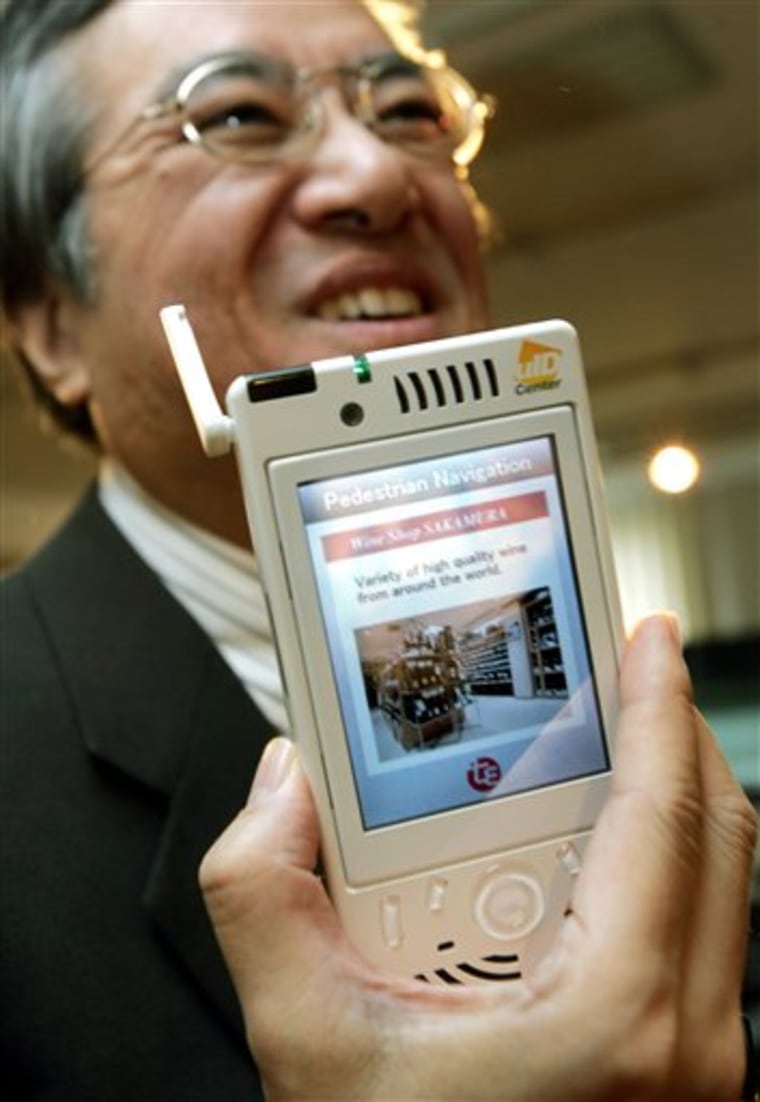Downtown strollers looking for directions, store guides or historical tidbits will be able to get an earful without talking to anyone — thanks to 1,200 computer chips embedded around Tokyo's Ginza shopping district.
The information can be heard through earphones that pick up signals from chips stuck in cement, lampposts and subway-station ceilings. The 1 billion yen ($8.7 million) government-backed Tokyo Ubiquitous Technology Project spans several blocks.
University of Tokyo professor Ken Sakamura says the effort gives a glimpse into the future, when such chips will become so widespread that government offices and private businesses will use them to zap information to passers-by.
"This project is to build an infrastructure for the 21st Century," Sakamura said during a demonstration Monday.
Similar experimental efforts are under way elsewhere in Japan.
During a tour, reporters wearing the earphones and a portable media player strolled around the shopping district. The player, which is worn around the neck, also features a small video screen.
In front of Mitsukoshi Department Store, a voice explained how a statue of a lion has long been the store's trademark. Cross the street to Nissan Motor Co.'s showroom, and the gadget automatically switched to a chip at the showroom.
"Welcome to Nissan Ginza gallery," says a woman who appears on the video screen.
By pushing buttons on the device, the user can see additional information, such as a map or a historical photo.
U.S. cities have expressed interest in the technology, Sakamura said.
Japan is hoping the technology can be used to help to guide the elderly, the blind and the handicapped through city streets, Sakamura said.
It also sees potential in the service — now available in Japanese, English, Chinese and Korean — to help tourists get around, he said.
